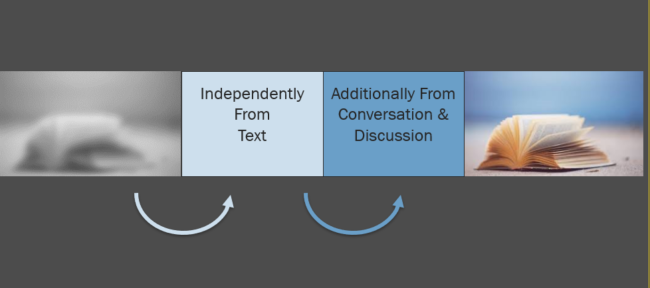05.26.20Checking For Understanding Online with Eric Snider

Checking for Understanding is one of the biggest challenges in teaching; online you can multiply that tenfold. It’s like trying to assess how well your class is doing while looking in through the keyhole.
That’s why I found this video of Eric Snider’s so profound. He’s teaching Rita Williams-Garcia’s One Crazy Summer (adapting the book unit from our curriculum, actually, I’m happy to say) and does a great job of constantly assessing where his students are.
Here’s the clip:
What I love about it:
WHEN Eric Checks for Understanding. CFU with reading is a two-step process. First we need to understand that students can generate meaning directly from the text without support from others–which is often tacitly often provided by the discussion after the reading… oh! that’s what was going on! Then, later, we need to make sure they understand the full interpretive context based on input from others. And it’s to easy to assume that kids who can do 2 could do 1. Not so. Often they are able to use subsequent discussion to fill in the gaps in what they missed while reading. So it’s brilliant that Eric checks right away here, before the discussion.
What a great use of the Chat to gather real time data. There aren’t many ways that online teaching is better than in-class but one benefit is that it’s easy and simple to gather data like this. it would be harder to do in the classroom.
Eric checks twice! It would be so easy to assume that once you’d explained, “Delphine is ashamed of the creases not the rally,” students would instantly get it. It seems that way to us because we are expert readers and we perceive easily. But it turns out even after explanation #1 students are still confused.
Also what a beautiful culture of error. “We’re pretty split and it looks like we might be a little bit confused…” Eric says. No judgment. It’s safe to be wrong.
Love, love, love the way he narrates the positive: “Thanks Lisa, Thanks Juwaun” He makes students feel seen when they work hard and he normalizes active engagement by helping students see it all around them.
Finally, there’s Solari and the lesson she teaches us. She’s answering from the back seat of her car, for goodness sake … and she crushes it. Yes, this is really, really hard. But kids are resilient. They can do it when we ask for their best and give them ours.
Onward, friends.
To learn more about the curriculum Eric is using, visit https://teachlikeachampion.org/reading-reconsidered-curriculum.